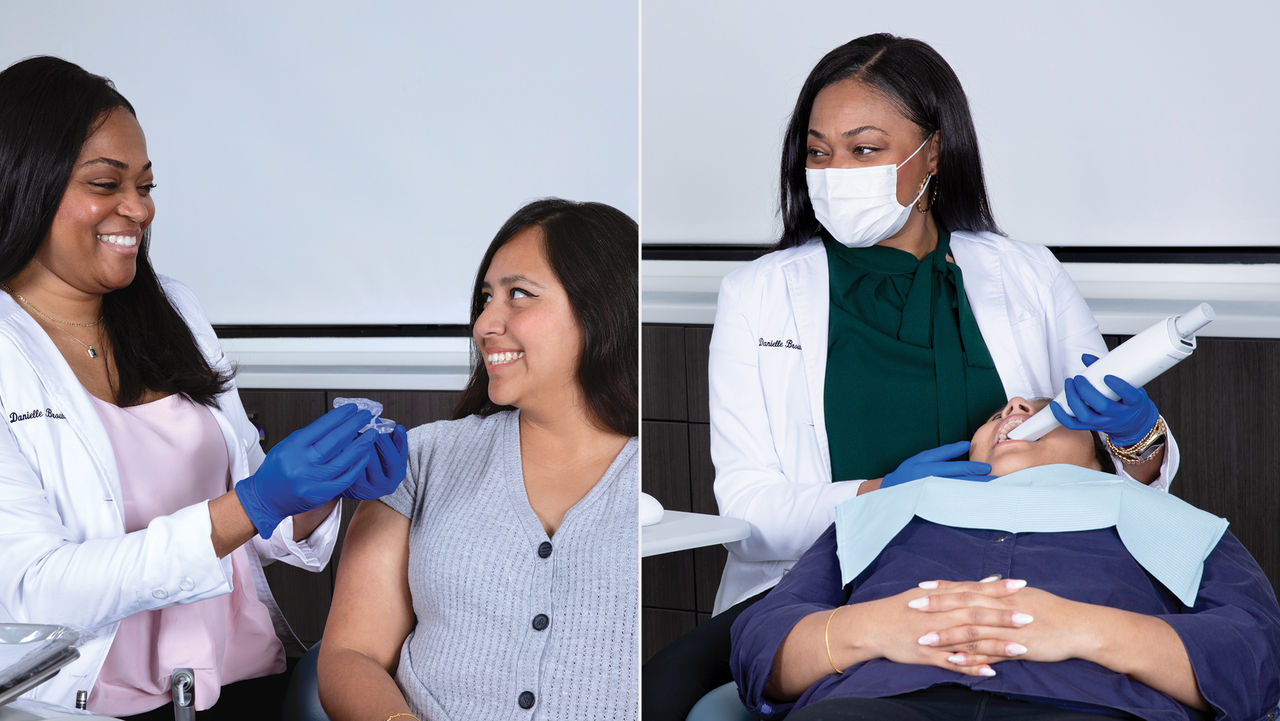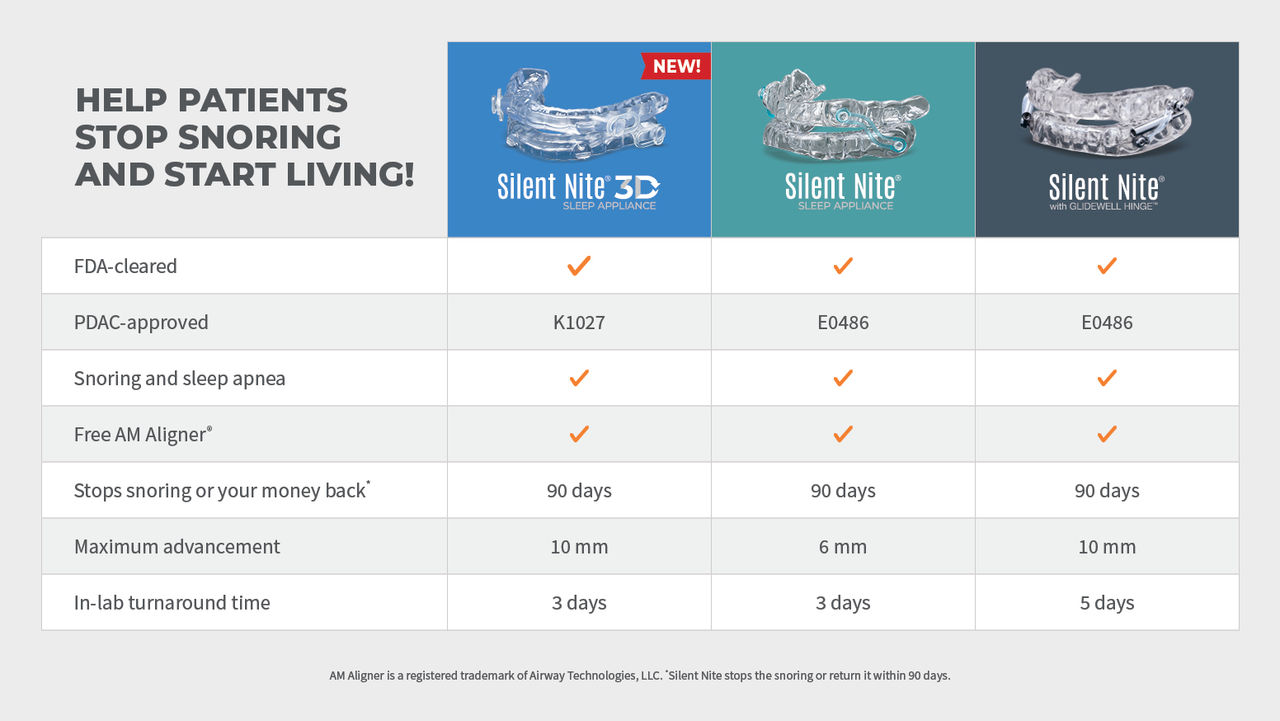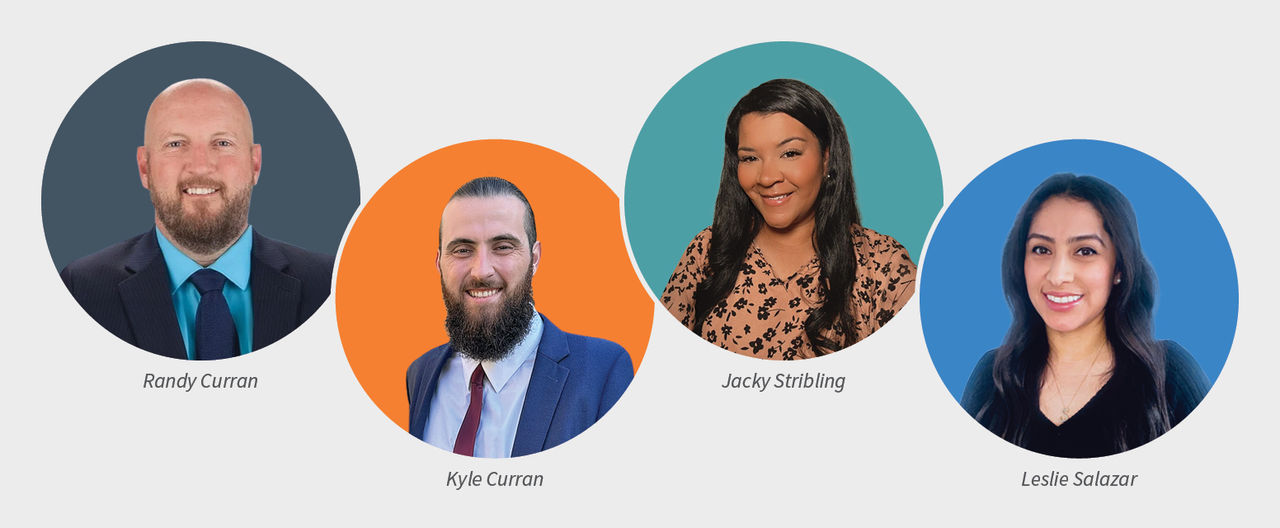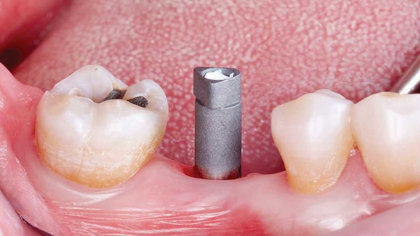2201 Dupont Dr., Irvine, CA 92612
© 2025 Glidewell. All rights reserved.
800-854-7256 USA
Demystifying oral appliance billing codes to grow sustainable sleep programs.

Sleep dentistry isn’t just an add-on — it’s a way to elevate care and grow your practice. Millions struggle with snoring and obstructive sleep apnea (OSA), and oral appliance therapy (OAT) offers a comfortable solution. Understanding coverage and reimbursement helps make treatment affordable and your program sustainable.
Dentists new to medical billing for OAT quickly learn that two billing codes define the landscape: E0486 and K1027. Both describe custom-fabricated devices used to treat OSA, but their distinctions matter — for compliance, reimbursement, and audit protection.
Glidewell’s Silent Nite® 3D Sleep Appliance, part of the Silent Nite family, has become a leading example of a device eligible under K1027, while traditional hinged appliances like the Silent Nite with Glidewell HingeTM continue to fall under E0486. Understanding the correct usage of each code is essential to ensure proper claim processing and payer compliance.

The Silent Nite 3D Sleep Appliance is PDAC-approved for the K1027 code, while the Silent Nite and Silent Nite with Glidewell Hinge appliances are PDAC-approved for the E0486 code.
For years, E0486 has been the standard Healthcare Common Procedure Coding System (HCPCS) code describing custom-fabricated, adjustable oral appliances with a fixed mechanical hinge — the type historically approved by PDAC (the Pricing Data Analysis Coding contractor for Medicare) and referenced throughout the CMS LCD (Centers for Medicare and Medicaid Services Local Coverage Determination) identification number L33611 for Oral Appliances for OSA.
As new designs emerged, many appliances achieved mandibular advancement without a mechanical hinge, relying instead on flexible or interchangeable components. To address that structural difference, CMS introduced K1027, defined as:
Oral appliance, custom-fabricated, adjustable for the treatment of obstructive sleep apnea, without a fixed mechanical hinge.
This update gave payers a way to classify modern appliance designs — based on how they function.
The key distinction:
Typical reimbursement varies between payers and contracts, but national trends show:
Note: These figures reflect national averages. Actual allowables vary widely — from $500 to $5,000 or more — depending on state, payer, and contracted fee schedules.
While K1027 can yield higher reimbursements, coverage remains inconsistent. Some carriers fully recognize the code; others still accept only E0486 and will deny K-coded claims outright. Always confirm each payer’s policy and authorization requirements before delivery.
Regardless of code, every successful OAT claim should include:
When billing K1027, always mirror E0486 LCD documentation standards. Many payers still evaluate K-coded claims using E0486 medical-necessity criteria during audits or pre-payment review.

Teams like Pristine Medical Billing (pictured above) can help simplify the more complex aspects of billing codes for dental sleep medicine.
Setting up your practice to accept medical insurance for OAT is more straightforward than most dentists realize. Begin with the following:
These steps not only protect your claims from denials but also establish a foundation for sustainable reimbursement.
Dental sleep medicine continues to be one of the most rewarding and impactful growth areas in general dentistry. It’s a field that is projected to grow significantly in the coming years, from $1 billion in 2024 to $2.5 billion by 2035. Dentists who incorporate OAT and bill medical insurance see higher case acceptance, stronger referral relationships, and more predictable revenue.
By lowering out-of-pocket costs for patients, establishing credibility within the medical community, and putting patient care first, dentists build the foundation for a stable, ethical, and thriving sleep program. Offices that implement sound medical-billing workflows often see thousands of dollars in additional monthly revenue while improving access to care for patients who might otherwise forgo treatment.

The US dental sleep medicine market is expected to thrive, with a compound annual growth rate estimated at 8.4% from 2025 to 2035.
E0486 will remain the industry anchor because it’s deeply rooted in CMS policy. However, as more manufacturers develop devices without fixed mechanical hinges, K1027 will continue to gain acceptance among the payers.
For Glidewell providers using the Silent Nite family of appliances, this evolution simply expands what’s possible: more flexibility for patients, more billing options for practices, and greater confidence in compliance.
The difference between E0486 and K1027 ultimately comes down to how payers recognize and reimburse oral-appliance therapy.
Understanding which payers accept which code — and structuring your documentation accordingly — is the key to avoiding denials, protecting reimbursement, and maintaining compliance.
As this field evolves, dentists who take the initiative to get medical-carrier credentialed and join dental sleep medicine networks will be best positioned for long-term success. Doing so not only lowers patient costs and increases case acceptance, but it also builds trust within the medical community and creates consistent referral pathways.
By bridging the gap between dentistry and medicine, providers can reach more patients, deliver better outcomes, and grow sustainable sleep programs built on clinical integrity — not just cash flow.
Send blog-related questions and suggestions to hello@glidewell.com.


